#car amplifier in south africa
Text

Unleash the ultimate driving soundtrack with Pioneer, the best car audio system in South Africa! Elevate your audio experience with cutting-edge technology and top-notch performance. Pioneer has been revolutionizing car audio for decades, and our commitment to excellence shines through in every detail.
Get ready to feel the music like never before with crystal-clear sound and heart-thumping bass. Our range of car audio systems caters to all music enthusiasts, from casual listeners to avid audiophiles. With user-friendly interfaces and seamless smartphone integration, staying connected on the go has never been easier.
Enjoy precision engineering and exceptional durability, ensuring your Pioneer system stands the test of time. Enhance your daily commutes or epic road trips with Pioneer's unrivaled sound quality and immersive listening experience. Don't settle for anything less than the Best Car Audio System in South Africa. Upgrade to Pioneer today and transform your journey into a symphony of sound!
#car audio system dubai#best car speaker system in saudi arabia#car subwoofer for sale in dubai#best car audio in dubai#car amplifier in south africa#car audio
0 notes
Text

AUDI Car Audio System Sale
Are you browsing for AUDI Car audio system sales online at the best price? Check out our wide range of Car accessories and find AUDI Car audio system sales at wholesale price. Know the latest trend and enhance your shopping experience with our safe and reliable service Start Shopping Now!
#android car audio system#AUDI car audio system sale#car amplifier for sale#Car dash cam South Africa#apple carplay for ford
0 notes
Text
‘We won’t stop’: How Columbia’s students etched a new Gaza protest legacy
Inside a movement that took over a university building and lost its encampment within 24 hours – yet refuses to die.
New York, United States — At about 10pm on Monday, April 29, I thought I would call it a night.
My student journalist colleagues and I had stayed late into the night on Columbia University’s campus the previous couple of days, reporting on a story that had grabbed the world’s attention: the pro-Palestine protests and encampment that had inspired similar campaigns in schools across the United States and globally.
As I slung my camera bag on my back and began to leave campus, walking by the camp, I got a tip from a passing protester: “I would stick around till about midnight,” they said. “Maybe go home first, though.”
Got it. I went home to charge backup camera batteries and grab spare memory cards before leaving for campus again.
Back at Columbia, it appeared that more than one of us had gotten the tip. Crowds of student journalists, all of us with matching paper badges and blue tape on our clothes, waited next to the encampment for whatever was to come. Our journalism faculty stood by our side, as they had been doing throughout.
Protesters grouped into “platoons”, and while we didn’t know what to expect, we kept eyes on different corners.
We split up to make sure different spots were covered; a few of us stuck by Pulitzer Hall, the home of Columbia Journalism School, where a small number of protesters had convened, while some others stood ready with cameras and recorders by the encampment.
That is when it all began. Campers began walking their tents off the lawn. One group began chanting. Another at the opposite end of the lawn sang protest hymns. I was with a small cohort of journalists who followed the tents to another small lawn, a clever decoy – whether intended or not – that meant many of us missed the moment, at the opposite end of campus, when protesters entered Hamilton Hall.
By the time we had run over, tens of student protesters had gathered to link arms outside the building, which their predecessors had taken over in 1968 to protest against the Vietnam War, and in 1985 to demand that Columbia divest from firms tied to apartheid South Africa.
Two of my colleagues were in the middle of the scrum, up against the doors watching two counter-protesters attempt to stop the occupation before being pushed out. Protesters rushed metal picnic tables, wooden chairs, trash cans, and planters to the doors where they were zip-tied together, effectively forming a barricade.
Two masked individuals appeared from a second-floor balcony to cheers and applause. They unfurled a hand-painted sign, “Hind’s Hall”, a reference to the six-year-old Palestinian girl who was killed with her family in their car in January as they tried to escape Israel’s military assault in Gaza.
That night, I fell asleep on the floor of a sixth-storey classroom in Pulitzer Hall to the echoes of song, one lone voice amplified through a megaphone, coming from Hamilton Hall: “This joy that I have, the world didn’t give it to me … the world can’t take it away.”

Student protesters playing music at the Columbia University encampment in New York City [Yasmeen Altaji/Al Jazeera]
The final offer
The morning before had felt very different. Columbia University’s South Lawn was packed, and the little protest village in the heart of the campus – dozens of tents and tarps comprising the “Gaza solidarity encampment” – was bustling with life, two weeks since its erection.
The protest is rooted in a decades-long movement for Palestinian rights in their homeland, and to hold Israel accountable for its illegal occupation of Palestinian territories. The current campaign against Israel’s war on Gaza – in which more than 34,000 people have been killed – also aims to pressure Columbia to divest from Israel-linked companies, just as the university did in the case of apartheid South Africa after similar protests four decades ago.
In my time covering the protest, the sounds at the encampment varied. Some days, you could hear the (Islamic) adhan, or the chants of (Jewish) Passover prayer. Or the sounds of the dumbek (drum) and sharp violins echoing microtonal hymns of Palestinian folk music and classical Andalusian muwashshah. Speakers amplified the melodies of iconic musicians like Abdel Halim Hafez and Fairuz.
Protesters shared donated hot meals – pizzas and samosas, bagels and eggs, sacks of mandarins and tubs of crackers, muffins and cookies spread on a tarp aptly called the “cornucopia”.
One camper had set up a makeshift nail parlour, painting red, white, black and green manicures matching the Palestinian flag. Cardboard “street signs” named the tight spaces between rows of tents “Walid Daqqa Road”, after the Palestinian novelist and activist who died of cancer in April, while in Israeli custody.
In the lawn’s centre, organisers routinely updated a whiteboard to reflect the day’s programmed activities: Dhuhr prayer and Shabbat dinner, with jazz in the mix, too.
In a corner of the lawn near the main campus walk, an “art guild” was buzzing with protesters painting signs, drawing patterns of the keffiyeh, decorating and personalising tent spaces.
But that Monday, campers received a final offer from the university administration under President Nemat “Minouche” Shafik: evacuate now, and evade suspension. Campers defied the order.
And by Monday night, the morning’s bustle had died down to a hum, then a whisper, before the eruption that culminated in the takeover of Hamilton Hall. At the encampment site, the zipper flap doors of empty tents billowed in the breeze. Blankets lay crumpled beside pillows still dented from a nap; a sole LED lantern left lit on the ground, a paintbrush crusted with dried red and green acrylic lay stuck on a paper plate.
It’s a community that student journalists like myself at the Columbia Journalism School had closely observed for days at a stretch, unlike the “outside media” who were only allowed on to campus in daily two-hour windows since the encampment went up. Joining us were undergraduate peers at student publications including WKCR and the Columbia Daily Spectator.
A community that, through the intensifying attention on its members, had been trying to emphasise that they weren’t the story. Signs planted across the lawn read: “All eyes on Gaza.”
But in the 24 hours that would follow, the world’s gaze on Columbia would only sharpen.

Students were trapped inside the entrance vestibule at John Jay Hall in Columbia University in New York on Tuesday, April 30, 2023 [Yasmeen Altaji/Al Jazeera]
The raid
Tuesday morning started eerily quiet. The camp was empty, save for a few protesters, and Hamilton Hall was sleepy, the only movement coming from a banner reading “INTIFADA” hanging off the side of the building.
Just a few days prior, far before the occupation of Hamilton Hall, the Columbia administration had sent a notice arguing that “to bring back the NYPD at this time would be counterproductive, further inflaming what is happening on campus, and drawing thousands to our doorstep who would threaten our community”.
The note was met with mistrust by protesters: After all, the university had already called the police to campus for the first time in more than 50 years in April to try to clear the encampment. More than 100 students had been arrested.
Instead, I heard organisers advise campers to pack their belongings in trash bags and write phone numbers on their arms in case of arrest.
By Tuesday night, their apprehension would turn into reality. The NYPD entered Columbia’s campus shortly after 9pm on Tuesday (01:00 GMT on Wednesday).
Students linked arms and sang together in anticipation before the harmonies of “We shall not be moved” merged with the march of hundreds of police officers making their way, in formation, to Hamilton Hall.
Calls through long-range acoustic devices (LRAD) to disperse or face arrest, echoed across the campus square, all the time weaving in and out of the floating tunes of the protest hymns, earworms that anyone who’d been on campus had likely come to memorise.
Protesters outside of Hamilton braced for arrest. But officers turned away from them upon arrival, and instead turned towards us – onlookers and press.
Officers instructed us to vacate the area. We walked backwards to get everything on video. “It’s easier if you face forward,” one officer said. “Turn around so you don’t fall,” another yelled repeatedly in a collective command. “Time to go inside,” another said. “Back to your dorms.”
While our backs were against the door of a building at the end of the courtyard where Hamilton was, the doors opened, and officers raised their batons, giving one final push until we were all inside. There was a moment of disorientation before we realised where we were: inside an undergraduate dormitory called John Jay Hall.
It’s where the student health centre, a dining hall, and a late-night campus eatery are. But we couldn’t see any of that. While police guarded the doors into the entry vestibule of the building in front of us, campus security guarded the rest of the building behind us, restricting access to dorm residents.
With about 30 or 40 of us squeezed into the small entry vestibule, ventilation was poor. We wouldn’t reach the bathroom. Red arrows pointed towards the emergency exit but the doors were blocked by officers. Phone batteries were dying. And most pressing, for the journalists among us: we couldn’t see Hamilton beyond the bodies of officers standing at John Jay’s glass doors.
For about three hours, students kicked at the front doors, slouched on the ground against the wall, and slept with their backpacks as pillows. One student sat cross-legged on the floor, sobbing softly while her friend comforted her.
Three hours passed in that hall before we were let out, officers directing us to dorms and buildings they did not know the names or locations of. “We know you want to get out of here. We’re doing you a favour,” one said.
As I left campus at about 1:30am, I walked past a crew hauling the tents off the South Lawn and into a garbage truck that crushed them on the spot.
[See embedded video in the article]
The remains
On Wednesday, the tension wasn’t palpable, only disappointment. The campus was quiet, but not calm. It was completely empty. No one, aside from residents and essential staff – which the journalism faculty ensured we were viewed as, as student journalists – were allowed past campus gates.
Where the encampment once stood, there were only marks of discoloured grass in the shape of rectangular tent bases.
But the movement seems anything but a ghost; on Wednesday, protesters hosted a “light show” beside the campus, projecting titles onto the public-facing side of Hamilton Hall that read “Hind’s Hall forever.”
Every year, on the eve of exams, students gather to let out what is known as a “primal scream” on campus. On Thursday, they took that tradition to Shafik’s house, shouting outside her door.
On Friday, protesters again lined the street outside of Columbia’s gate. And the words still rang through the neighbourhood: “Disclose, divest, we will not stop, we will not rest.”
#palestine#free palestine#save palestine#gaza#free gaza#save gaza#israel#israel palestine conflict#israeli apartheid#bds boycott#boycott israel#bds movement#war on gaza#gaza genocide#gaza strip#world news#current events#palestinian genocide#stop the genocide#genocide#columbia university#student activism#activism#demonstration
34 notes
·
View notes
Text
Automotive Battery Market Demand, Opportunities and Forecast By 2028
This Automotive Battery market report has been prepared by considering several fragments of the present and upcoming market scenario. The market insights gained through this market research analysis report facilitates more clear understanding of the market landscape, issues that may interrupt in the future, and ways to position definite brand excellently. It consists of most-detailed market segmentation, thorough analysis of major market players, trends in consumer and supply chain dynamics, and insights about new geographical markets. The market insights covered in Automotive Battery report simplifies managing marketing of goods and services effectively.
The automotive battery market is expected to witness market growth at a rate of 5.38% in the forecast period of 2021 to 2028 and is expected to reach USD 114.58 billion by 2028.
Download Sample PDF Copy of this Report to understand structure of the complete report @ https://www.databridgemarketresearch.com/request-a-sample/?dbmr=global-automotive-battery-market
Market Overview:
Automotive batteries refer to batteries which supply electric current to motor vehicle that are usually rechargeable in nature. Some of the automotive batteries types are Lithium- ion, lead- acid, nickel and sodium- ion. These are generally 12-volt battery of six cells and are the heart of the car's electrical system. The main aim of the component is to start the engine and then the power for electrical system is supplied by alternator.
Some of the major players operating in the Automotive Battery market are Johnson Controls, GS Yuasa International Ltd., Exide Technologies, East Penn Manufacturing Company, Camel Group Co, Fengfan Co.,Ltd., FIAMM, ENERSYS, Robert Bosch GmbH, MK Battery, Amara Raja Group, Hitachi, Ltd., SANYO Electric Co.,Ltd, Okaya Power Pvt. Ltd., Luminous India, Huawei Technologies Co., Ltd., Chaowel Power Holdings Limited among other domestic and global players. Market share data is available for global, North America, Europe, Asia-Pacific (APAC), Middle East and Africa (MEA) and South America separately. DBMR analysts understand competitive strengths and provide competitive analysis for each competitor separately.among others.
Global Automotive Battery Market Scope
The automotive battery market is segmented on the basis of battery type, vehicle type, engine type, functions and sales channel. The growth amongst the different segments helps you in attaining the knowledge related to the different growth factors expected to be prevalent throughout the market and formulate different strategies to help identify core application areas and the difference in your target markets.
On the basis of battery type, the automotive battery market is segmented into lithium- ion, lead- acid, nickel and sodium- ion.
On the basis of vehicle type, the automotive battery market is segmented into passenger vehicle, commercial vehicle and electric vehicle.
On the basis of engine type, the automotive battery market is segmented into internal combustion engine and electric vehicles.
On the basis of functions, the automotive battery market is segmented into electric propulsion, start, lighting and ignition.
On the basis of sales channel, the automotive battery market is segmented into OEM and aftermarket.
Browse More About This Research Report @ https://www.databridgemarketresearch.com/reports/global-automotive-battery-market
Table of Content:
Part 01: Executive Summary
Part 02: Scope of the Report
Part 03: Global Automotive Battery Market Landscape
Part 04: Global Automotive Battery Market Sizing
Part 05: Global Automotive Battery Market Segmentation By Product
Part 06: Five Forces Analysis
Part 07: Customer Landscape
Part 08: Geographic Landscape
Part 09: Decision Framework
Part 10: Drivers and Challenges
Part 11: Market Trends
Part 12: Vendor Landscape
Part 13: Vendor Analysis
Browse Trending Reports:
Global Small Cell Power Amplifier Markethttps://www.databridgemarketresearch.com/reports/global-small-cell-power-amplifier-market
Global Flax Milk Markethttps://www.databridgemarketresearch.com/reports/global-flax-milk-market
Global Burner Management System Markethttps://www.databridgemarketresearch.com/reports/global-burner-management-system-market
Global Surgical Tumor Ablation Markethttps://www.databridgemarketresearch.com/reports/global-surgical-tumor-ablation-market
About Data Bridge Market Research:
An absolute way to predict what the future holds is to understand the current trend! Data Bridge Market Research presented itself as an unconventional and neoteric market research and consulting firm with an unparalleled level of resilience and integrated approaches. We are committed to uncovering the best market opportunities and nurturing effective information for your business to thrive in the marketplace. Data Bridge strives to provide appropriate solutions to complex business challenges and initiates an effortless decision-making process. Data Bridge is a set of pure wisdom and experience that was formulated and framed in 2015 in Pune.
Data Bridge Market Research has more than 500 analysts working in different industries. We have served more than 40% of the Fortune 500 companies globally and have a network of more than 5,000 clients worldwide. Data Bridge is an expert in creating satisfied customers who trust our services and trust our hard work with certainty. We are pleased with our glorious 99.9% customer satisfaction rating.
Contact Us: -
Data Bridge Market Research
Email: – [email protected]
0 notes
Text
Automotive Collision Repair Market
Automotive collision repair mainly includes denting, painting, repairing, and replacement of accidentally damaged vehicles parts. Also, the cost for the collision repair is mainly financed by the insurance companies.
All these insurance-providing companies have tie-up with the automotive collision repair service providing shops.
Additionally, the rising awareness with regard to the insurance of automotive vehicles has resulted in an increase in auto insurance expenditure across the globe, and technological advancements in the automobile sector that are the factors boosting the growth of the global automotive collision repair market over the forecast period.
Automotive Collision Repair Market is valued at USD 193.87 billion in 2022 and is projected to reach a value of USD 228.94 billion in 2030 expanding at a CAGR of 2.1% over the forecast period of 2022-2030.
Key Market Trends:
Every market has its growth determinant and challenges. One of the major factor that has fuelled the market growth over the forecast period is the rise in the number of subscriptions of automobile insurance.
Additionally, the OEMs have developed several channels in order to distribute their branded parts to different service departments. The rise in demand for hybrid and electric cars has increased the demand for specific tools and spare parts used in such vehicles and this is mainly projected to improve the demand for automotive collision repair.
Also, the vehicle owner is obligated to get a notice that the warranties that apply to the non-OEM and nonstandard parts will not be provided by the manufacturer of the vehicle but by the manufacturer or distributor of the parts. This has also boosted the market growth.
Also, technological advancements have brought numerous benefits to organizations and the digitalization has allowed all of us to experience a more personalized service, quicker delivery, and instant access to support. This has also boosted the market growth over the forecast period.
There are various advantages associated with inspection and repairing by a collision repair specialist. The collision repair specialist always finds a way of reducing the cost of damages.
Request Free Sample: https://wemarketresearch.com/reports/automotive-collision-repair-market/467/
Segmental analysis of the Market:
Based on Product
Paints & Coatings
Consumables
Spare Parts
The Paints and Coatings segment has dominated the market growth over the forecast period. This is because of the spare parts used in the automobile service delivery include crash parts, repair materials, supplementary mechanical parts, restoration materials, and tools. The paints & coatings segment includes coloured paints and scratch-resistant coatings, coatings for plastic parts, vehicle topcoats, electrodeposition coatings, and glass coatings.
Based on Service Channel
DIY
DIFM
OE
The DIY segment has dominated the market growth over the forecast period. This is because of the robust demand from the emerging economies. The DIY segment is expected to register the highest CAGR in the Asia Pacific region over the forecast period, followed by South America.
Based on Vehicle Type
Light-duty Vehicle
Heavy-duty Vehicle
The light-duty vehicle segment has dominated the market growth over the forecast period. This is because the light-duty vehicles segment comprises of hatchbacks, sedans, SUVs, and crossover cars.
Europe is anticipated to amplify at a considerable CAGR
The Automotive Collision Repair Market is segmented into 4 main regions namely, North America, Europe, Asia Pacific, and Middle east and Africa. Among these, Europe has dominated the market growth over the forecast period. This is because of the increasing number of vehicle sales is leading to significant growth of the automotive collision repair industry in the said region. An upsurge in vehicular damage due to the lack of stringent driving regulations in the Asia Pacific region is further driving the regional market growth.
Competitive Landscape:
Some of the prominent companies operating in the market are 3M; Automotive Technology Products LLC; Continental AG; Denso Corporation; Faurecia; Federal-Mogul LLC; Honeywell International, Inc.; International Automotive Components Group; Johnson Controls, Inc.; Magna International, Inc.; Mann+Hummel Group; Martinrea International, Inc.; Mitsuba Corporation; Robert Bosch GmbH; and Takata Corporation.
Major Questions Answered In This Report:
What is the growth rate of the Automotive Collision Repair Market?
What are the primary growth determinants of the market?
Which are the major regions constituting the geographical landscape of the market?
Which are the prominent companies operating in the market?
Key Takeaways From The Report:
The Automotive Collision Repair Market is projected to expand at a CAGR of 2.1% over the forecast period.
The rise in the number of subscriptions of automobile insurance is aiding market progression.
The DIY segment is poised to expand significantly over the forecast period.
Europe has dominated the regional market sphere over the forecast period.
Access Full Report: https://wemarketresearch.com/reports/automotive-collision-repair-market/467/
About We Market Research
WE MARKET RESEARCH is an established market analytics and research firm with a domain experience sprawling across different industries. We have been working on multi-county market studies right from our inception. Over the time, from our existence, we have gained laurels for our deep rooted market studies and insightful analysis of different markets.
Our strategic market analysis and capability to comprehend deep cultural, conceptual and social aspects of various tangled markets has helped us make a mark for ourselves in the industry. WE MARKET RESEARCH is a frontrunner in helping numerous companies; both regional and international to successfully achieve their business goals based on our in-depth market analysis. Moreover, we are also capable of devising market strategies that ensure guaranteed customer bases for our clients.
Contact Us:
We Market Research
Phone: +1(929)-450-2887
Email: [email protected]
0 notes
Text
Mining Locomotive Market Growth, Size, Analysis, Outlook by Trends, Opportunities and Forecast to 2030

Mining locomotive market is anticipated to amplify at a CAGR of 7% over the forecast duration of 2022-2030. The growing focus on the evolution of multi-purpose mining locomotives is primarily augmenting the outlook of this market vertical.
Heavy-haul freight trains called mining locomotives are utilized for a variety of tasks in the building, energy, and transportation sectors. These tools are used to move people and things into and out of opencast or underground mines.
Metal ores, coal, spoils garbage, culm, tilings, and other overburdens are among the materials that are frequently carried with these tools. Mining locomotives can be diesel-powered, powered by steam generated by burning coal seams, or powered by electricity at some mine sections thanks to an electrified third rail.
GET A FREE SAMPLE REPORT:- https://wemarketresearch.com/upcomingreports/sample-request/mining-locomotive-market/23/
Global Mining Locomotive Market: Segmental Assessment
By Type:
• Steam Mining
• Electric Mining
• Diesel Mining
The electric mining segment is expected to amass notable gains over the analysis period owing to rising environmental concerns and rapidly depleting fuel resources.
By Application:
• Underground Mining
• Open-Cast Mining
Major Regions And Countries Covered:
• North America- U.S. and Canada
• Europe (U.K., France, Italy, Spain, and Russia)
• Latin America (Mexico and Brazil)
• Asia Pacific (China, India, Japan, Australia, and South Korea)
• Middle East & Africa (GCC, South Africa, and Egypt)
Competitive Landscape
The prominent companies characterizing the competitive gamut of this industry are CSR Corporation Brookville, Trident, Mining Equipment Ltd., Bombardier Transportation, Irwin Car and Equipment, Alstom SA, AEG Power Solutions, Siemens AG, Hitachi Ltd., and Others.
Notably, in 2021, Wabtec announced the launch of its first battery electric locomotive range named FLXdrive powered with an energy capacity of 2.4-MWh.
Interested in purchasing this Report:- https://wemarketresearch.com/upcomingreports/purchase/mining-locomotive-market/23/?license=single
Frequently Asked Questions
What is the demand outlook for mining locomotive in the global market until 2032?
Which region is forecast to be the most lucrative for mining locomotive market growth?
Which are some leading mining locomotive manufacturers?
About We Market Research
WE MARKET RESEARCH is an established market analytics and research firm with a domain experience sprawling across different industries. We have been working on multi-county market studies right from our inception. Over the time, from our existence, we have gained laurels for our deep rooted market studies and insightful analysis of different markets.
Our strategic market analysis and capability to comprehend deep cultural, conceptual and social aspects of various tangled markets has helped us make a mark for ourselves in the industry. WE MARKET RESEARCH is a frontrunner in helping numerous companies; both regional and international to successfully achieve their business goals based on our in-depth market analysis. Moreover, we are also capable of devising market strategies that ensure guaranteed customer bases for our clients.
Contact Us:
We Market Research
Phone: +1(929)-450-2887
Email: [email protected]
Web: https://wemarketresearch.com/
0 notes
Text
Junction Field-Effect Transistor (JFET) Market Comprehensive Research Study, Regional Growth, Business Top Key Players Analysis

Global Junction Field-Effect Transistor (JFET) Market report emphasizes on the detailed understanding of some decisive factors such as size, share, sales, forecast trends, supply, production, demands, industry and CAGR in order to provide a comprehensive outlook of the global market. Additionally, the report also highlights the challenges impeding market growth and expansion strategies employed by leading companies in the “Junction Field-Effect Transistor (JFET) Market”.
Global Junction Field-Effect Transistor (JFET) Market research report analyzes top players in the key regions like North America, South America, Middle East and Africa, Asia and Pacific region. It delivers insight and expert analysis into key consumer trends and behavior in market place, In addition to an overview of the market data and key brands. It also provides all data with easily digestible information to guide every businessman’s future innovation and move business ahead.
Global Junction Field-Effect Transistor (JFET) Market Segmentation Analysis:
Major Players in Junction Field-Effect Transistor (JFET) market are: Panasonic Toshiba NXP ON Semiconductor Cental Semiconductor Fairchild STMicroelectronics Infineon Calogic Vishay Most important types of Junction Field-Effect Transistor (JFET) products covered in this report are: Dual N-Channel N-Channel P-Channel Most widely used downstream fields of Junction Field-Effect Transistor (JFET) market covered in this report are: High Input Impedance Amplifier Low-Noise Amplifier Differential Amplifier Constant Current Source Analog Switch or Gate Voltage Controlled Resistor
Click the link to get a free Sample Copy of the Report @ https://crediblemarkets.com/sample-request/junction-field-effect-transistor-jfet-market-547406?utm_source=Kaustubh&utm_medium=SatPR
Junction Field-Effect Transistor (JFET) Market, By Geography:
The regional analysis of Junction Field-Effect Transistor (JFET) market is studied for region such as Asia pacific, North America, Europe and Rest of the World. The North America is one of the leading region in the market due to numerous cross industry collaborations taking place between automotive original equipment manufacturers and mobile network operators (MNOs) are taking place for continuous internet connectivity inside a car to enhance the user experience of connected living, while driving. Asia-Pacific region is one of the prominent player in the market owing to large enterprises and SMEs in the region are increasingly adopting Junction Field-Effect Transistor (JFET) solutions.
Some Points from Table of Content
Global Junction Field-Effect Transistor (JFET) Market 2022 by Company, Regions, Type and Application, Forecast to 2030
1 Junction Field-Effect Transistor (JFET) Introduction and Market Overview
2 Industry Chain Analysis
3 Global Junction Field-Effect Transistor (JFET) Market, by Type
4 Junction Field-Effect Transistor (JFET) Market, by Application
5 Global Junction Field-Effect Transistor (JFET) Consumption, Revenue ($) by Region (2018-2022)
6 Global Junction Field-Effect Transistor (JFET) Production by Top Regions (2018-2022)
7 Global Junction Field-Effect Transistor (JFET) Consumption by Regions (2018-2022)
8 Competitive Landscape
9 Global Junction Field-Effect Transistor (JFET) Market Analysis and Forecast by Type and Application
10 Junction Field-Effect Transistor (JFET) Market Supply and Demand Forecast by Region
11 New Project Feasibility Analysis
12 Expert Interview Record
13 Research Finding and Conclusion
14 Appendix
Direct Purchase this Market Research Report Now @ https://crediblemarkets.com/reports/purchase/junction-field-effect-transistor-jfet-market-547406?license_type=single_user;utm_source=Kaustubh&utm_medium=SatPR
Reasons to Purchase this Report
Qualitative and quantitative analysis of the market based on segmentation involving both economic as well as non-economic factors
Provision of market value (USD Billion) data for each segment and sub-segment
Indicates the region and segment that is expected to witness the fastest growth as well as to dominate the market
Analysis by geography highlighting the consumption of the product/service in the region as well as indicating the factors that are affecting the market within each region
Competitive landscape which incorporates the market ranking of the major players, along with new service/product launches, partnerships, business expansions, and acquisitions in the past five years of companies profiled
Extensive company profiles comprising of company overview, company insights, product benchmarking, and SWOT analysis for the major market players
The current as well as the future market outlook of the industry with respect to recent developments which involve growth opportunities and drivers as well as challenges and restraints of both emerging as well as developed regions
Includes in-depth analysis of the market of various perspectives through Porter’s five forces analysis
Provides insight into the market through Value Chain
Market dynamics scenario, along with growth opportunities of the market in the years to come
About US
Credible Markets is a new-age market research company with a firm grip on the pulse of global markets. Credible Markets has emerged as a dependable source for the market research needs of businesses within a quick time span. We have collaborated with leading publishers of market intelligence and the coverage of our reports reserve spans all the key industry verticals and thousands of micro markets. The massive repository allows our clients to pick from recently published reports from a range of publishers that also provide extensive regional and country-wise analysis. Moreover, pre-booked research reports are among our top offerings.
The collection of market intelligence reports is regularly updated to offer visitors ready access to the most recent market insights. We provide round-the-clock support to help you repurpose search parameters and thereby avail a complete range of reserved reports. After all, it is all about helping you reach an informed strategic decision about purchasing the right report that caters to all your market research demands.
Contact Us
Credible Markets Analytics
99 Wall Street 2124 New York, NY 10005
Email: [email protected]
0 notes
Text
Our Enemies Deploy the Cognitive Bomb
The first thing you need to know about the Human Rights Watch (HRW) report that was released on 27 April accusing Israel of “apartheid” is that the accusation has nothing to do with apartheid as most people understand it, the racially-based system of oppression that was in place in South Africa before roughly 1991.
HRW is accusing Israel of “crimes against humanity of apartheid and persecution,” which are defined by a treaty called the “International Convention on the Suppression and Punishment of the Crime of Apartheid,” based on a UN General Assembly resolution passed in 1973, and the 1998 Rome Statute of the International Criminal Court.
It should be noted that neither Israel nor the USA are parties to either treaty. The 1973 convention was signed by 109 countries, which do not include Israel, the USA, Canada, Australia, or any of the developed countries of Western Europe.
Here is the definition of the crime of apartheid as understood by HRW:
An intent to maintain domination by one racial group over another.
A context of systematic oppression by the dominant group over the marginalized group.
Inhumane acts.
The “inhumane acts” referred to by the definition include such things as murder, torture, “arbitrary arrest and illegal imprisonment,” forced labor, “deliberate imposition on a racial group or groups of living conditions calculated to cause its or their physical destruction in whole or in part,” all on the basis of race or ethnicity. While Palestinians often claim such mistreatment, their claims – often amplified and lent authority (the “halo effect”) by HRW and similar NGOs – are overwhelmingly false, exaggerated, or lacking in context (e.g., the claim is commonly made that a Palestinian was “executed” when he was shot in the act of stabbing a Jew or running one down with a car).
HRW also adds that
The reference to a racial group is understood today to address not only treatment on the basis of genetic traits but also treatment on the basis of descent and national or ethnic origin, as defined in the International Convention on the Elimination of all Forms of Racial Discrimination. Human Rights Watch applies this broader understanding of race.
In other words, apartheid doesn’t have to involve “race.” Any alleged discrimination against a national group can be considered apartheid. And given that “Palestinians” have diverse origins, including Egypt, Syria, Arabia, Jordan, Turkey, and even the same Canaanite tribes as the forbears of the Jewish people, they don’t even fit this broader definition.
When I hear “apartheid” I think of white, black, and colored beaches and restrooms, laws against interracial marriage or even sexual relationships, laws establishing segregated housing, employment, and public transportation, denial of the right to vote or hold office, and so forth. I think of official classification of people by color. It is not an exaggeration to say that such a system, brutally imposed by force (as it was in South Africa), is a crime against humanity.
And that, of course, is why HRW, an organization that has changed over the years from a legitimate human rights watchdog into part of the well-oiled (and thickly greased with dollars and euros) machine for the delegitimization and demonization of Israel, wishes to accuse the Jewish state of apartheid, a crime that today evokes revulsion throughout the world – and which, following the precedent set by the treatment of the Republic of South Africa, justifies the boycotting, sanctioning, and total expulsion from the international order of Israel.
As the Kohelet Forum notes in its response to the report, no country other than South Africa has ever been deemed an “apartheid state” by a majority of the international community, including China, Sudan, and others that have engaged in massive systematic oppression of minorities.
None of the characteristics of South African apartheid can reasonably be applied to Israel. Everyone who knows anything about apartheid South Africa and Israel knows that. There is simply no resemblance, and HRW’s abstraction of the crime of apartheid and application of the word to Israel is dishonest and is part of the cognitive war that is being waged against her as a prelude to her hoped for physical destruction.
But never mind. Israel is being accused of seriously mistreating Palestinian Arabs, both its Arab citizens and the residents of the Palestinian Authority and Gaza, simply because they are Palestinians. If that is true, it is certainly reprehensible. So we should consider if the report even succeeds in making that case.
The report is 213 pages long, so it is impossible for me to critique it in detail in a short blog. But here are some things that I noticed in the first few pages (see the Kohelet response to HRW for more):
The report says that
From 1967 until the present, [Israel] has militarily ruled over Palestinians in the OPT, excluding East Jerusalem. By contrast, it has since its founding governed all Jewish Israelis, including settlers in the OPT since the beginning of the occupation in 1967, under its more rights-respecting civil law.
This is untrue. There is no military government in Gaza – there is zero Israeli presence there at all – and areas A and B of Judea and Samaria are ruled by the PA. There is a military administration of Area C, the territory that is under full Israeli control according to the Oslo Accords, but that administration governs both Israeli communities and Palestinian ones. There is no “separate law” for the two populations.
In general, the report ignores the existence of the PA and the Hamas government of Gaza. It’s true that Israel controls the borders and airspace between the river and the sea (with the exception of the border between Gaza and Egypt). But it does not control the daily lives of all of the residents of those areas as the report asserts.
HRW criticizes Israel for not allowing free movement of Palestinian Arabs from the territories into pre-1967 Israel, and for not allowing those Arabs outside of Israel recognized by the UN as “Palestinian refugees” to enter the territories or pre-1967 Israel. It dismisses Israeli explanations that this is a consequence of the amply-demonstrated Palestinian propensity to commit murderous terrorist acts against Israelis, saying “[e]ven when security forms part of the motivation, it no more justifies apartheid and persecution than it would excessive force or torture.” Tell it to those thousands of Israelis who have lost friends and family members to Palestinian terrorists.
There is almost no mention of Palestinian terrorism throughout the full report, even though most restrictions placed on Palestinian movement, such as the Judea/Samaria security barrier, were instituted after the murderous Second Intifada, in which more than 1,000 Israelis were murdered by terrorists. The selective blockade of Gaza is criticized without reference to the thousands of rockets that have been fired into Israeli towns, or the numerous tunnels intended to infiltrate terrorists into Israel. There is no mention of the 2015-2018 “stabbing intifada” which took the lives of dozens of Israelis.
The report claims that within pre-1967 Israel, “Palestinian [sic] citizens [have] a status inferior to Jewish citizens by law” as a result of the Nation-State Law, which in fact does not restrict them in any way, and which is similar to constitutional provisions in other ethnic nation-states, including the proposed constitution for the State of Palestine. It also invents or misrepresents other laws, including those concerning citizenship and residence.
The report will probably be a prime exhibit in the upcoming “Durban IV” conference on racism which will be held this September at the UN in New York, on the 20th anniversary of the first Durban conference, which devolved into an “anti-Israel hate-fest.”
Accusations of apartheid and persecution are tremendously powerful, especially in the US in today’s climate of racial antagonisms. But the Israeli-Palestinian conflict is actually a national/political one, and not a racial one (although antisemitism plays an important role). It has little in common with pre-1991 South Africa or the racial problems of the USA. It is also a small part of a much larger project by a group of nations, international institutions, NGOs, and others to eliminate the Jewish state. These antagonists are motivated by geopolitics, religion, ideology, antisemitism, or all of these. By focusing only on the Palestinians, the HRW report has the effect of hiding this broader context.
Israel’s domestic political paralysis, which has been ongoing for at least two years, makes it hard enough to respond to the military challenges it faces from its enemies. But it is impossible for an essentially leaderless nation to properly fight a cognitive war. Fixing this has to be Israel’s top priority today.
Abu Yehuda
15 notes
·
View notes
Link
Pioneer Car Audio Video, Amplifiers, Speakers, Sub woofers in Middle East and Africa. Get the best car audio & video system accessories stereo, radio, speakers, sub woofers, analog & digital Amplifiers, receivers, tv tuners & reverse camera in UAE, Qatar, South Africa, Kenya, Egypt, Saudi Arabia.
3 notes
·
View notes
Photo
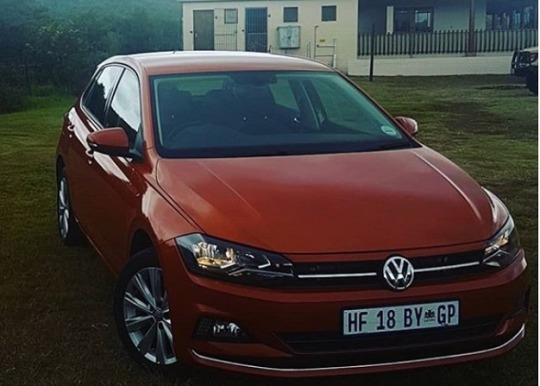
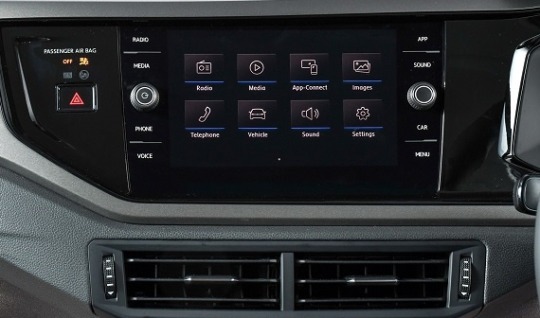
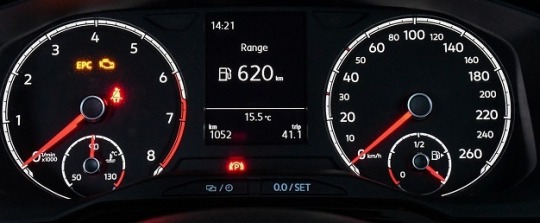
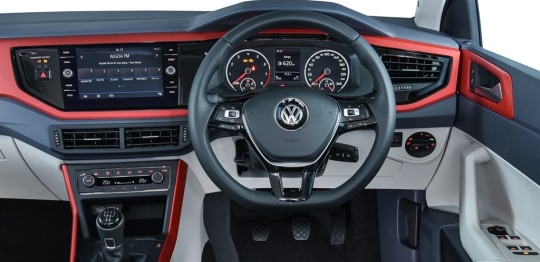
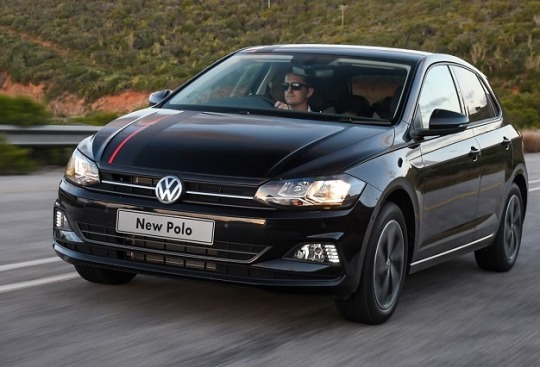
Driving A Premium Used VW Polo
Polo and Polo Vivo - Few cars are as synonymous with local success as Volkswagen seminal compact city car duo.
Since its launch, the Polo hatch has consistently been the second best-selling passenger car in South Africa with its sibling the Vivo being the local best-seller.
South Africans love the Polo almost as much as they enjoy a good braai; nearly 23 000 Polos were sold in 2017 alone.
In January 2018, Volkswagen launched its sixth-generation Polo locally. One of the benefits of having a group-wide platform (MQB AO) means technology and features will trickle down from more premium offerings, such as the Golf.
Some used VW Polo’s are longer, wider and, given a host of new tech, more premium than their predecessors. The 2018 Polo was the first to be equipped with digital instruments (borrowed from the Golf).
The range comprises five 1.0 TSI derivates (Trendline, Comfortline and Highline) in two engine outputs; 70kW/175Nm and 85kW/200Nm. Both engines can be mated to either a six-speed manual or seven-speed DSG box.
The launch of the 2018 Polo was the culmination of an R 6.1-billion investment at VW’s factory in Uitenhage, Eastern Cape, where the new hatch will be assembled and sold both locally and internationally.
Given its new features, sportier design and legacy, will the new Polo become another best-seller locally?
Quick facts
Model: Volkswagen Polo 1.0 TSI
Prices: R235 000 - R302 000
Engine: 1.0-litre, 3-cyl, turbo-petrol
Power: 75kW, 85kW
Torque: 175Nm ; 200Nm
Transmissions: five-speed manual or seven-speed DSG
Driving it
What’s it like behind the wheel? In short, the 2018 model is more premium than the outgoing Polo, handles well on the road, offers a comfortable ride and is surprisingly brisk despite its 1.0-litre engine capacity (the only engine currently available until the 2.0-litre GTI arrives).
The 70kW version offers sufficient power and the 1-0-litre petrol performs adequately when mated to the 5-speed manual. The 7-speed DSG, another benefit from its Golf sibling, is incredibly smooth, swopping cogs accurately and with great rev-matching speed.
The 85kW Highline, mated to a DSG, elevates the Polo to Golf territory offering a comfortable, frugal (4.7-litres/100km) hatchback.
In terms of handling, the Polo offers enough grip for spirited driving with negligible body roll though city driving remains its strong suit.
The engine, especially in 70kW guise, has a laid-back approach and is a perfect match for its comfort-tuned suspension. Steering is precise, light and overall its agile enough to make a breeze of entering and extricating itself from tight parking spots. Overall, the Polo has grown up and has resolved many of the issues affecting the outgoing model.
The Polo has all the ingredients for a best-seller in SA and given its price point and positioning could grab sales from the high-end Golf.
Design
Like the Golf, Touran, Tiguan, Passat and Arteon, the Polo uses the VW group's MQB platform and as a result, gains many of the design and structural elements of its siblings.
It's a lot more assertive in appearance than its predecessor though borrows heavily from the current Golf especially its head- and taillights. The roofline is longer and a fine line runs along its flanks.
Range and dimensions
Based on the VW group's MQB A0 platform, the Polo sports new dimensions; length has been increased 81mm to 4053mm and wheelbase lengthened by 94mm to 2548mm. The hatchback is also 69mm wider to 1751mm though its height has been reduced by 7mm to 1461mm.
In addition to the three standard trim lines, the special edition Polo beats (with features including a 300-watt sound system), R-Line package (with a sporty exterior featuring C-shaped front air curtains, side sills, boot spoiler, rear diffuser and 17" Bonneville alloy wheels) and the performance-focused halo model, the Polo GTI, (available in South Africa in the second quarter), provide added variety.
Inside
A new dashboard and cockpit layout make its way into Volkswagen compact models. New for this generation of Polo are digital dials, a new dashboard, angled centre console as well as revised dials and controls. More than any other feature, the digital dash gives the Polo an upmarket position few of its rivals can match.
It’s a lot more practical too for families – boot space has increased from 280 to 351 litres.
Driver Assistance systems
New features for the Polo include the lane change system, blind spot monitor with rear traffic alert, semi-automated park assist, proactive occupant protection system and a manoeuvre braking function. The hatchback has optional keyless start.
Overview of standard features
Trendline:
Automatic Post-Collision Braking System as well as LED daytime running lights and front and rear curtain airbags. Front power windows, colour infotainment system with four speakers and a Connectivity Package featuring Bluetooth and USB also come as standard
Comfortline:
Multi-function Display “Plus”, the Composition Colour infotainment system with six speakers, leather multi-function steering wheel, Driver Alert System and front and rear electric windows
Highline:
Composition Media infotainment system, App Connect, Voice Control, Sport seats, Cruise Control with speed limiter and white LED ambient lighting (front doors and instrument panel).
Beats:
The new edition of the successful Polo beats special model has a 300-watt sound system from legendary US audio specialist ‘beats' (by Dr. Dre) and a whole array of customised features on board. The newly-designed amplifier and subwoofer are housed at the bottom of the boot to the left-hand side of the spare wheel well, where a full-size spare wheel is housed.
Related: Browse used VW Polo models available at Group 1 Cars.
The Comfortline and Highline trim versions can be further personalised by choosing the R-Line package.
R-Line:
The ‘R-Line' package makes the Polo even more dynamic with such features as 17-inch alloy wheels ('Bonneville'), a large, sporty front bumper and, at the rear, a diffuser with chrome trims and a roof spoiler. The Polo with R-Line package also has wrap-around black sill trim strips which visually press the car down to the road. The R-Line Package is only available in South Africa in the second quarter.
Convenience
The Polo can be further personalised and upgraded to satisfy individual budgets and tastes. New in the options programme are features such as high-intensity LED head- and tail light clusters and one of the largest panoramic sunroofs in its class (opening is 10mm wider and 20mm longer than before).
.
.
.
Article from https://pre-ownedsmarts.postach.io/post/driving-a-premium-used-vw-polo
2 notes
·
View notes
Text
Advantages of Adding Subwoofer in Car
Audio technology is developing just as quickly as cars. However, a lot of drivers are not aware of the numerous functions that speakers and subwoofers perform in an automobile's audio system.
The speakers and subwoofer installed in the automobile have almost exact exterior appearances but operate very differently within. Different speaker types can be distinguished based on their ability to produce sound, including high-power car subwoofers in South Africa, woofers for low sound output, midrange speakers for medium sound production, and tweeters for high sound output.

A subwoofer will often relieve smaller speakers of creating low frequencies. As a result, smaller speakers will be able to deliver sound throughout a more aesthetically pleasing frequency range. The presence of a subwoofer produces undistorted sound and reduces the burden on full-range speakers.
Electricity is frequently utilized to produce sound through speakers. A subwoofer is a bass speaker system that can play at lower frequencies. The primary function of a subwoofer is to generate sound between 10 and 200 Hz. Car audio system in South Africa purchasers have two main alternatives when choosing a sub: either they may purchase the different components to put together a custom subwoofer box, or they can purchase an off-the-shelf sub box with the sub already pre-mounted in the box.
Things to keep in mind while purchasing car subwoofer
Power:
Power boosts the subwoofer's capacity to produce such a big, booming sound. It's crucial to concentrate on the RMS (continuous power output) ratings rather than the peak ratings when comparing power ratings.

Frequency Range:
You may get a sense of how low a sub can play from the frequency range. But keep in mind that a variety of factors, like as the style of box the sub is mounted in, can affect the sub's real performance.
Size of the Subwoofer:
What size subwoofers play loudest and lowest is an endless question. You must take into account sensitivity, enclosure type, and available power in order to answer this difficult question. If space is not an issue and your ultimate goal is to have a system that sounds loudly and lowly, choose the largest subs. However, don't disregard minor subscribers. Smaller subs can produce a lot of sound when powered properly and placed in the appropriate enclosure.
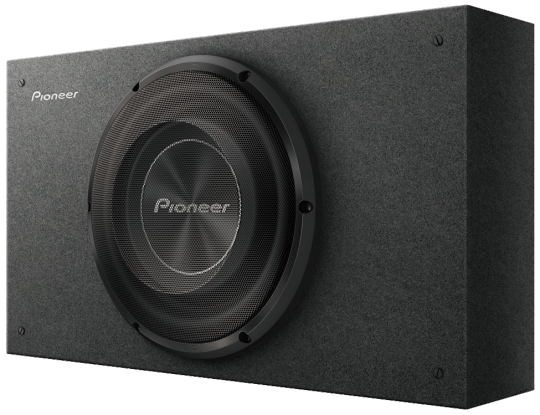
You now have knowledge of subwoofers and the four main guidelines for selecting the top champion subwoofers in South Africa. Any other queries? You don't need to worry; simply contact Pioneer, and we'll guide you through the process and provide the best results. It is advisable to consider both the leading brands and the industry's factory-trained experts for proper installation service.
#Car Audio System in South Africa#Car Music System in South Africa#Speakers For Car in South Africa#Android Car Stereo in South Africa#Car Speakers in South Africa#Car Amplifier in South Africa#Best Car Speaker System in South Africa#Best Car Subwoofers in South Africa
0 notes
Text
Configuring A Perfect Car Audio Sound System- What Do You Need?
Increasing the quality and clarity of the music produced by your automobile's Car Audio Sound System is one of its biggest advantages. Your favorite radio stations and songs will sound more realistic and sharper with increased sound clarity.
Unbeknownst to you, the factory-installed car audio accessories South Africa in your car don't always provide the finest quality and overall experience. And for this reason, a lot of car owners decide to upgrade to a more sophisticated bundle of speakers for their vehicles.

So, where should you even begin? So, in order to assist you to choose your new set of vehicle speakers, experts have put up this useful shopping guide.
What kind of automobile speakers are you looking for?
There are three different speaker systems available for updating the audio in your car: component speakers, full-range (coaxial) speakers, and micro amplifiers.
A little amplifier
The most straightforward method for improving the sound in your automobile is to use tiny amplifiers and mini subs like the Vibe Optisound. You can preserve your original radio and speakers with this straightforward plug-and-play system while still having enough power to run your system and improve quality. Additionally, micro amplifiers can serve as the framework for an entirely new system.
Full-spectrum speakers (Coaxial)
Almost all automobile radio systems use full-range speakers, which are the most common kind. They are equipped with all the speaker components and can generate a variety of audio frequencies. They are made up of a subwoofer for the lows and a treble for the highs to accomplish this. If you want to easily replace your factory speakers, coaxial speakers are your best bet.
Woofer components
Your Car Audio Sound System will reverberate with the bass notes produced by a woofer composed of rigid, lightweight material. When it relates to woofer cones, polypropylene is the material of choice, and it works wonderfully.
Conclusion
In short, these are a few suggestions that will help you find the best car audio system. You must follow these instructions to get the best sound.
#Car Audio Sound System#isuzu d-max sound system#apple carplay for hyundai#audi car audio system sale#android car audio system#isuzu android car audio system
0 notes
Text
My Dad and Peter Stuyvesant.
The Venezia was a much-loved Italian restaurant, with the most delicious ice cream, in Sea Point, one block from my High School.
Every other Friday, I would meet my father there after school for lunch. My parents were long since divorced and these Friday lunch dates alternated with the weekends I would spend with him and his new Austrian wife.
I would order a toasted cheese and tomato, and a strawberry milkshake, he would have something more substantial, along with cigarette after cigarette. I can still smell the acrid burning of his Peter Stuyvesants, a brand named after the Dutch peg-legged former governor of colonial New Amsterdam (New York) until he lost it to the British.
The slogan for this oddly-named cigarette was ‘Your International Passport to Smoking Pleasure’. The cinema ads depicted jet-setters touching down in New York on a luxury airliner in what seemed like some weird modernisation of the governor’s original colonial conquests. For white South Africans, it all made perfect sense.
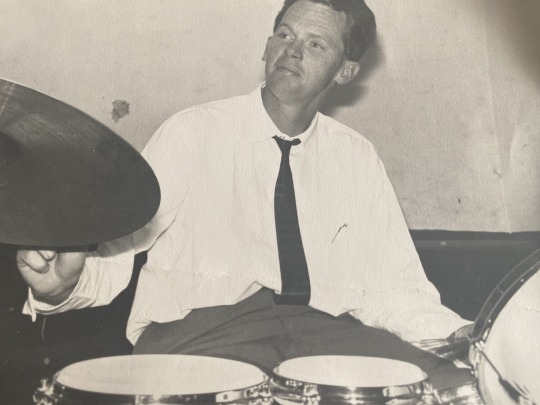
So, after my father had asked me the same questions he asked every week, ‘how was school/rugby/that friend of yours etc’, things would lapse into silence and I would watch the ash on the end of his cigarette grow longer and longer and hope it wouldn’t fall into his coffee.
His habit was to stare at any woman in the restaurant that caught his eye. He wasn’t subtle, but preferred direct and continuing eye contact until I would tell him to stop, my cheeks blushing and wishing the red leather seats would swallow me up. He would pull his gaze away, mumble something, light another Stuyvesant, and then start staring again.
My Dad was tall, thin, with prematurely grey hair, lots of it. A teenager during the war, too young to join up, his height meant he was handed white feathers when walking in town with his mother by those thinking he was shirking his duty. When he did join up, as a dispatch rider, it ended up with him crashing his bike (allegedly forced off the road by pro-Hitler Afrikaners) and spending a long time in bed with broken legs. He never talked about it. In fact, now that I come to think about it, he never talked about anything much. He was from that ‘action, not words’ generation of men, the bread-winners, the head of the family, the kings of their Castle lagers. A man of action.
He did talk a lot to people in America, though. In fact, he hardly ever stopped. He was ZS1JD, his call sign as an amateur radio operator, or a HAM, as it was known. He bought and built huge pieces of radio equipment, receivers, transmitters, amplifiers, filled with transistors and glowing globes that smelled like burnt dust when they fired up. He would have long chats about whatever men of his 30-something age talked about.
In the age before TV came to South Africa, it was a crackly confirmation that there was another world out there, maybe the same place where the men in the Peter Stuyvesant advert cavorted with young women who wouldn’t mind you staring at them one little bit, in fact, they might invite you over to their table and light your cigarette for you.
These were the days of Vietnam, the Six Day War, space walks, and moon shots, so there was always something to talk about. But really the thing they all loved to talk about was their equipment, which model of this, the performance of that, tech talk turned them on.
One part of his ‘rig’ was the outside aerial that carried their signals through the atmosphere. This was nothing subtle again. In his case, he had a 50-foot iron tower standing on a reinforced concrete base constructed in our back garden, topped with a multi-pronged horizontal aerial.
The radio tower built by a crew of black labourers with a white boss man to oversee it all. As we watched the workers in their blue overalls swarm up into the sky, finishing off this grey metal edifice, suddenly a worker fell. He landed in the deep grass, winded and groaning. After a few moments, he got up and went back to work. Shocked at the violence of his fall, I looked at my Dad for reassurance. “Don’t worry, John,” he said, “you know they don’t feel pain like us.” The trouble is, he believed it. As a seven-year-old at the time, I had no reason not to.
As a travelling commercial salesman, he travelled throughout the Western Cape, hawking watches, crockery, cutlery and jewellery to small businesses. He stayed away for a week at a time, at least twice a month. Then, it was just me and my Mom in the house, and the ‘maid’, as domestic workers were called in those days. Things were a lot more relaxed with him away. We didn’t have to wait till his car finally pulled up outside in the evenings and we could eat our supper, now with meat grey from overcooking and vegetables equally worse for wear.
I don’t remember much about those meals, eaten at the open window that looked over Table Bay, with Robben Island in the distance, with its prisoner who would eventually challenge those who thought ‘they don’t feel pain like us’. I do remember how I mixed my mashed potato together with the gem squash to make something more palatable, and the tinned guavas covered with sweet evaporated milk that would be dessert.
Some nights, after supper, he would pull on a pair of grey trousers and a black polo neck, pack his drum kit and head out to play in various jazz bands. He wasn’t bad at it, he could hold a beat, but I think the point was to get out of the house, away from my mother and I.
It was such a strong urge that not much stood in his way. One evening, he managed to drop a carving knife into his calf, a deep wound that spurted blood, quickly staining his handkerchief and first one dish towel and then another one. Clearly, this was a wound that needed stitching and some rest. But no, the show must go on, so he bandaged himself as best he could and limped out of the house Did he play that night? I don’t know, but he definitely got out of the house.
My Dad eventually left the house permanently when I was about nine, and then it was just me, my Mom, and Elsie the elderly, often tipsy, ‘maid’. She was there when I got home from school with sardines on toast, or baked beans, or toasted cheese and tomato.
I don’t think I missed him really, though I must have felt something. He was just gone, and became the Dad I would meet at Venezia every second Friday.
He stopped playing the drums from what I remember, he remarried (that lasted ten years or so), he built a large sprawling house in the Durbanville countryside, with a swimming pool and a bull terrier, and another aerial, even higher than the first one.
He still smoked Peter Stuyvesants, the butts piling up in his ashtray as he sat at his radio and called out to the world, “This is ZSIJD, how do you copy, who’s out there? This is ZS1JD.”
1 note
·
View note
Text
Incredibly Loud Ferrari 812 N-Largo Attracts Unwanted Attention In South Africa
New Post has been published on https://coolcarsnews.com/incredibly-loud-ferrari-812-n-largo-attracts-unwanted-attention-in-south-africa/
Incredibly Loud Ferrari 812 N-Largo Attracts Unwanted Attention In South Africa
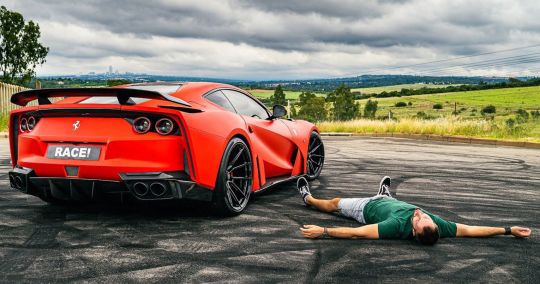
Several elements contribute to the dynamic driving experience. The car's soundtrack is one of these elements plus carmakers and even tuners have been obtaining ways to ensure that a potent automobile can be defined by the most suitable sound. Novitec has done this to its very own version of the Ferrari 812 Superfast —the 812 N-Largo. The Ferrari 812 N-Largo is the most recent featured car associated with Novitec’s "The Supercar Diaries, inch with host Bijon de Kock taking the only example on the Africa continent for a sweet yet noisy drive.
[embed]https://youtube.com/watch?v=TIk2U-jIMtg&feature=oembed[/embed]
Bijon managed to trace this specific 812 N-Largo to Johannesburg, S. africa, in the possession of a certain Marco Casciani (@race1 on Instagram). Interestingly, Marco also owned the other cars showcased in "The Supercar Diaries. inch This modified Ferrari started out as an 812 Superfast, until this and 17 others were transformed by Novitec into the 812 N-Largo.
According to Bijon, this particular 812 N-Largo used to be wrapped within a metallic dark blue color, great it sports a matte red complete. The N-Largo body kit produced this Ferrari wider and look a lot more planted to the road. Its big fender wells are home in order to Novitec's NF 10 NL hi-tech forged wheels, while its carbon-fiber-reinforced polymer aerodynamic dark elements contrast the particular fiery exterior color.
https://www.instagram.com/p/CLB6_DoFZCt
The Novitec Ferrari 812 N-Largo, however , is more than just carbon-fiber-reinforced polymer body and aerodynamic elements. It is also about greater power, better suspension system, and louder sound. The 812 N-Largo has been upgraded to 828 hp (618 kW) of maximum output, which allows it to splash from nil to 62 your in 2 . 8 seconds plus reach a top speed of 152 mph (345 km/h). This strength upgrade is complemented by a modified suspension with front lift program.
ASSOCIATED: Ferrari 812 GTS By Novitec Sports More Aggressive Looks Plus Ups Horsepower To 840
As the movie shows, the 812 N-Largo comes with a Novitec high-performance quad exhaust system, which usually practically amplifies the already noisy sound of the V12 engine. The particular piercing roar of the 812 N-Largo is so deafening that it can be noticed from far away, attracting attention all over the place. Its audiogasmic sound practically announces its presence.

Since the 812 N-Largo is so loud, this even grabbed the attention of individuals along with rifles and stopped Bijon. This seemed they were just curious about the boisterous nature of this bright red-colored Ferrari. Who wouldn't be?
Source: Novitec Group online
FOLLOWING: Listen To This Boisterous Ferrari 599 SA Aperta With Novitec's Sport Muffler Upgrade
#car girls#Cool Cars News#Cool Cars#Trucks and Motorcycles#cool fast cars#Hot Car Girls#Muscle Car Girl#News#The Coolest and Sexiest Muscle Cars In Los Angeles
2 notes
·
View notes
Text
KMRU – Peel (Editions Mego) / opaquer (Dagoretti Records)

Joseph Kamaru, the Nairobi-based sound artist and producer behind the KMRU moniker, is also the grandson of the influential and political musician of the same name and considered a “king” of Kikuyu benga. In 2018, KMRU started reissuing his grandfather’s records shortly after he passed away, and in a feature on Kamaru’s reissued catalog, KMRU spoke to his conversations with his grandfather about music. In terms of sound and with two generations between the two, it is hard to imagine they would have crossed paths naturally. In their talks just before Kamaru’s passing, KMRU’s grandfather consistently encouraged him to “stay honest” in his music, no matter what, a simple idea that carries more weight, and is easier to rehash in practice when it comes from a blood relative from the same field.
Peel by KMRU
KMRU, along with Uganda’s Nyege Nyege collective, is part of an expanding electronic scene in East Africa. The region has seen an exponential growth in software and internet access, especially Kenya which has one of the world’s fastest data connection speeds, exceeding the United States and South Korea. In turn, artists have adopted and incorporated music software into their music and developed their own ways of using them, infusing their productions with traditional rhythms and instrumentations of the area. In contrast to the energetic Nyege Nyege Tapes output and many artists sprouting from this scene, KMRU creates ambient music with slow beats and dub inflections in the vein of Detroit’s echospace label or early Andy Stott EPs, gleaning from his home country’s environmental sounds as much as it’s musical traditions.
opaquer by KMRU
Two weeks apart, KMRU releases the double-LP Peel and single-LP opaquer. Both albums, like the majority of KMRU’s catalog, contain deep and repetitive and captivating drone and sub bass sounds with subtle, microscopic inflections that rewards engaged listens. Although release within a month, the two have their differences. The pieces on Peel follow waves of repetitive, near-drones, surrounded by smaller outgrowths and separate, subtle manipulations. It could be analogous to a large whale swimming through a deep ocean with trailing schools of feeder fish living off the plankton its body creates. Opaquer also limits the bandwidth of its sound, focusing primarily on one reverberating sound source, usually a field recording, with smaller, electronic supporting tones. But opaquer alters its focus and doesn’t necessarily encourage the sensation of drone; the sounds, more decipherable however ambiguous they may be, live in the reverberations they leave behind, amplifying their contours and giving the impression of a whole, contiguous, solid sound mass.
Something that can define an effective ambient record is an ability to disintegrate the perimeter of the record itself and the outside world. Listening to either Peel or opaquer, say, outside at night, the albums are not met with too much interference, maybe the occasional passing car, laboring window air conditioner, or floating conversation from a neighbors’ windows. But these outside sounds incidentally bleed into the pieces and embed into what KMRU creates, becoming an unintended part of the composition. The wide-open nature of the pieces KMRU creates meet these outside sounds halfway, allowing a lively, tangible commingling, giving you an impression that the pieces on opaquer and Peel have an inherent generative property.
Ian Forsythe
#KMRU#Peel#opaquer#editions mego#dagoretti#ian forsythe#albumreview#dusted magazine#nairobi#uganda#Nyege Nyege Tapes#echospace#Andy Stott#east africa#kenya#ambient#electronic
4 notes
·
View notes
Text
Over the winter of 2015– 2016 what threatened the world economy was, in the words of the Economist, nothing less than a “calamity.” 9 The emerging market boom, which for so long had energized the narrative of globalization, had ground to a shuddering halt. Russia, Central Asia, Brazil and South Africa were already in recession. An implosion of the Chinese economy, with a plunging yuan and investors scrambling for the exit, could easily have pushed the world economy into recession. The Economist painted a horror scenario in which the funds flowing out of China and a huge glut of overcapacity amplified a global cycle of deflation, the momentum of which would have been more unstoppable than in 2008. Industrial and commodity producers would be left insolvent. At the same time, if the yuan peg broke, it would not be the only currency to devalue. Dollar carry trades across the emerging markets would unravel,provoking a general financial crisis. Western banks would not be immune.
The scenario was terrifying. Even the possibility of its unfolding was enough to spread panic. Commodity markets were intensely nervous. After falling off a cliff in November 2014, oil had stabilized in the spring of 2015 at c. $ 60 per barrel. But China was now the world’s largest crude importer. The prospect of a China crisis coupled with the abundant supply of shale oil from the United States and the intransigent stand of the Saudi government sent markets over the edge once more. 10 Between the summer of 2015 and January 2016, prices halved from $ 60 to $ 29 per barrel. As the Saudis no doubt intended, this dealt a painful blow to the heavily leveraged US shale industry and sent ripples of anxiety through American financial markets. Even in the advanced economies propped up by quantitative easing, deflationary pressures were looming. In January 2016 the question at Davos was not how China would lead, but how it would cope. Could Beijing prevent a collapse? Would a Chinese implosion turn the jarring reversal of the fortunes in the emerging markets into a comprehensive rout? A year on, this is the global crisis that the Trump administration did not inherit. The question is, why not?
Any answer must start with the actions taken in Beijing. On the basis of its dramatic response to the crisis of 2008, the Chinese regime had a formidable reputation for effective economic policy. But in 2015 China’s initial response to the crisis was anything but reassuring. The fumbling efforts to stabilize the Shanghai stock market exposed the myth of Beijing’s omnicompetence. 11 QE with Chinese characteristics was not a success. The August 2015 liberalization of foreign exchange trading was mishandled. But Beijing held its nerve. Rather than allowing the yuan to continue its slide, the PBoC stabilized a new peg. Capital controls were stiffened, but otherwise the PBoC allowed the unwinding of exposed dollar positions. If this was an adjustment of balance sheets and not general panic, it was the right thing to do. From their peak of $ 4 trillion in the summer of 2014, China’s currency reserves fell by early 2017 to $ 3 trillion. Watching the monthly drain of tens of billions was nail biting, but eventually at the lower level reserves stabilized. To revive demand in early 2016, Beijing unleashed another credit boom and a fiscal stimulus, while at the same time it set about purging the most overexpanded heavy industrial sectors of overcapacity. Western media ordinarily known for their advocacy of market freedom could not hide their relief that Beijing’s grip had been restored. As the Economist remarked: “With capital now boxed in, much of it flowed into local property: house prices soared, first in the big cities and then beyond. Sales taxes on small cars were reduced by half. Between them, these controls and stimuli did the trick.” 12 In reaction commodity prices rebounded and manufacturing surged across Asia, pulling China’s giant manufacturing capacity back from the brink. The threat of global deflation receded. This is how the triumphalist narrative goes. China is not just another crisis-prone emerging market. Beijing is in control. A threat of crisis spawned in China that threatened to destabilize the world economy was contained by China. So far so good, one might say. But 2015 demonstrated not only that China was neither invulnerable nor omnicompetent. Even more significantly, it demonstrated that it was not autonomous. In 2008 the question had been whether China would dump its dollar holdings and destabilize the United States. Eight years later, thanks to China’s deeper financial integration, the question was reversed. As Beijing struggled to gain a grip on its stock market and the drain of foreign exchange, the question was not whether China would dump the dollar but whether the Fed would cooperate with China’s efforts to stabilize the yuan.
From the last chapter of Tooze’s Crashed
11 notes
·
View notes